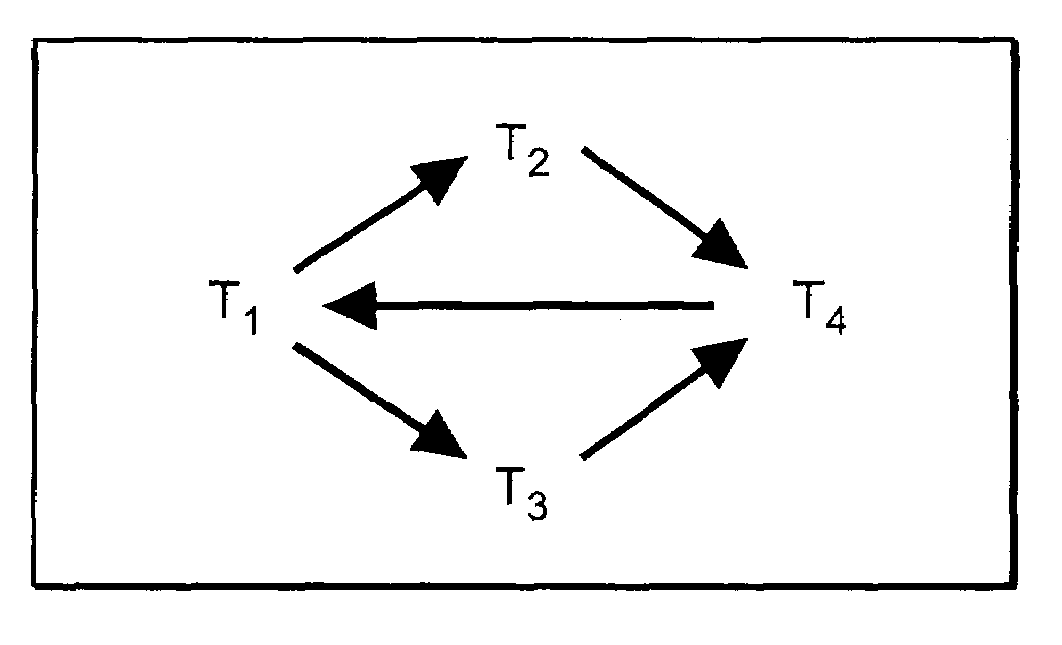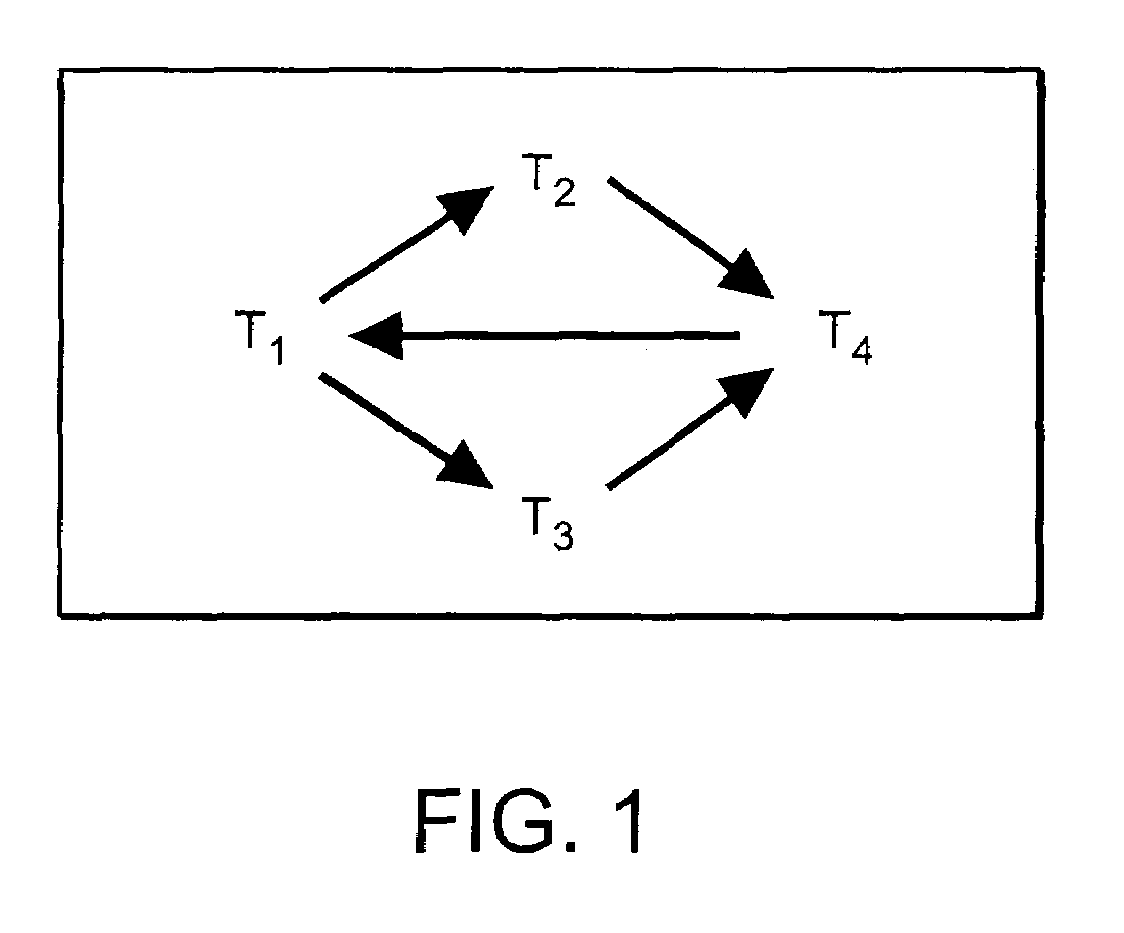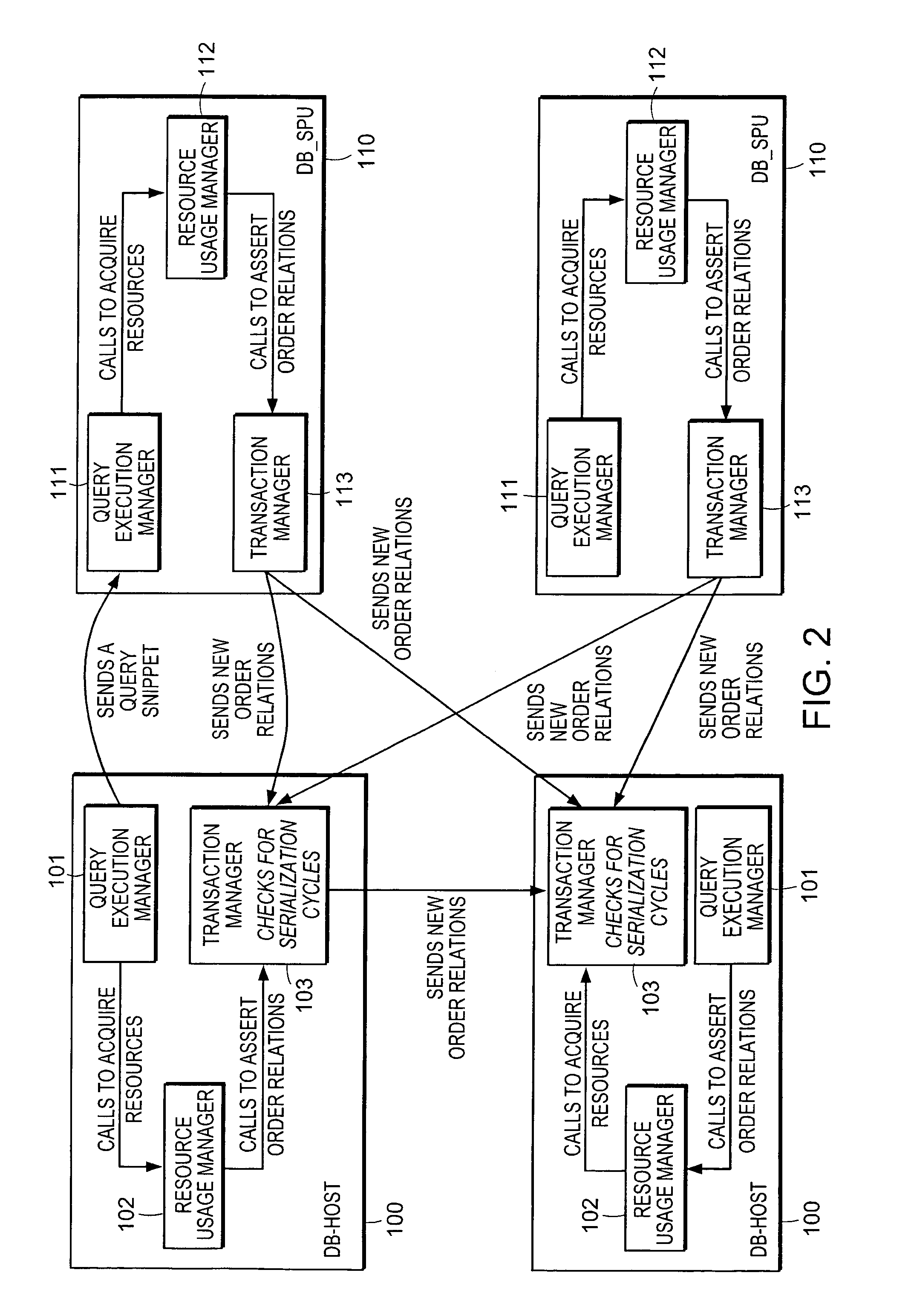Computer method and system for concurrency control using dynamic serialization ordering
- Summary
- Abstract
- Description
- Claims
- Application Information
AI Technical Summary
Benefits of technology
Problems solved by technology
Method used
Image
Examples
Embodiment Construction
[0040]A description of preferred embodiments of the invention follows. Efficiently assuring transaction serializability while avoiding deadlocks in a distributed environment is a significant problem for the concurrency control protocols of the prior art. Some approaches use a centralized “hub-and-spoke” scheme, in which a single computational entity makes all decisions. Other approaches use a federated scheme, in which global information affecting serialization is shared among all participants. Embodiments of the present invention use a distributed decision making process. It is neither fully centralized, nor fully federated. Instead, each element of a global decision is made locally. Information about serialization is then shared on a “need-to-know” basis.
[0041]The following examples show how embodiments of the present invention efficiently assure serializability in a distributed environment. These examples use some conventions to describe the temporal behavior of the system. The e...
PUM
 Login to View More
Login to View More Abstract
Description
Claims
Application Information
 Login to View More
Login to View More - R&D
- Intellectual Property
- Life Sciences
- Materials
- Tech Scout
- Unparalleled Data Quality
- Higher Quality Content
- 60% Fewer Hallucinations
Browse by: Latest US Patents, China's latest patents, Technical Efficacy Thesaurus, Application Domain, Technology Topic, Popular Technical Reports.
© 2025 PatSnap. All rights reserved.Legal|Privacy policy|Modern Slavery Act Transparency Statement|Sitemap|About US| Contact US: help@patsnap.com



